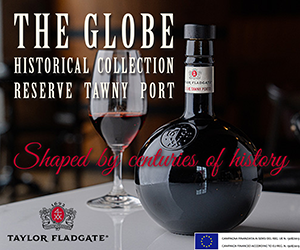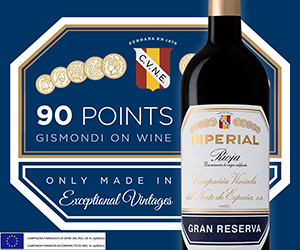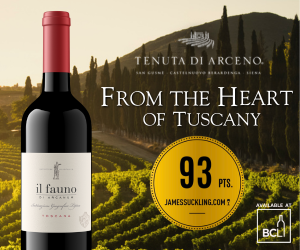Château Climens 2012 Vintage: Trying but unexpected!
Château Climens
2012 Vintage: Trying but unexpected!
"Quod donare mora nequit annua, dat brevis hora" (It can happen in an hour that which does not happen in a year, what a difference a day makes! - a Latin proverb)
At the very least 2012 was nothing like a relaxing holiday cruise. Storms, barrier reefs and stumbling blocks were cast at us during the crossing, which has made us even happier to reach the shores again in possession of some lovely cargo.
To start with, spring was particularly chaotic! Hot and dry in March, it became terribly wet in April and May, forcing us even to spray by hand, (with great discomfort!), tanks on the staff's backs as we were unable to use the tractors on our slippery sandy clay soils.
The thermometer was acting like a yoyo and the vines looked peaky. However, the apparition of the bunches of grapes seemed satisfactory and we relied on biodynamics to help the vines stand up to the violent climatic attacks which have now become routine.
Alas, it would not be enough this year because the blossoms had been given a rough time by the thermal excesses (in both extremes) in June. The spots of mildew were multiplying on the leaves; the bunches appeared to be moderately affected, but it was during July that we were really able to appreciate fully the situation, as the grapes affected became black on drying. The damage was very varied from one block to another, and even within the blocks, which was undoubtedly due to the very uneven state of ripening. The average losses are really very difficult to evaluate, but are probably around 30%... By converting to biodynamics, we have removed the vines' 'chemical crutch' and as they are still in their period of withdrawal, they are more fragile in spite of all the care and remedies administered. We accepted this risk and are more than ever determined to continue in this direction, even though the sight of these affected grapes is just so distressing for a grape grower.
We were hoping for drier weather. We got it, but to the extreme - over two months virtually without a drop of rain! The amount of batches of grape moths being laid were getting worrying but organic treatments well-applied saved us from becoming victims of these nasty little gluttons at a later stage (we had enough milestones as it was without adding this one).
The vines were pretty happy with the dry conditions but with September approaching they began to suffer, particularly after a month of August bordering on heat waves at times. The grapes were
struggling to ripen, the skins remaining very thick and old Lord Botrytis was keeping his distance of course!
On 23rd September, a rainy patch deigned to grace our soils with its presence: 40mm in a few days, which encouraged our favourite fungus to peak out from hiding, but not much more. If the grapes were at last golden and beginning to arbour their freckles as expected, there was hardly more evolution than that. And so, on 28th September we found ourselves ironically celebrating the end of the 2011 harvest and hoping not to beat the record of 1978 with its harvest start date at the beginning of November...
We spent a good part of the year either wishing for rain or cursing it! A few drops on Sunday 7th October gave us hope for things to speed up, but this year, patience is de rigueur. A peak at the records reminded us that the superb harvest of 1988 only began on October 15th to finish on the 29th - a little something to get our morale back up. The date actually transpired to be almost exactly the same; however the conditions would remain very different.
After a week of suspense and waiting, the concentration had eventually reached appropriate levels and we finally hit the vineyards to start harvesting under a beautiful sunny sky on Monday 15th October. The very next day the weather was gloomy, but the light drizzle had no serious negative consequences, but for the discomfort of the harvesters. The changing and unpredictable weather caused a few missed heartbeats, but we were spared more rain until the end of the week, which enabled us to make really good progress with the first passage of selective picking. Depending on the different blocks, the yields were varied, just like the quality of the remaining grapes still on the vines. The job of selective picking was therefore very variable, but on the whole, the grapes were gorgeous, especially in the blocks of old vines.
Unfortunately, the rain was back on Friday morning, 19th October. Not knowing whether it was there to stay or not, we took advantage and set to cleaning up the youngest vines. Those planted in 1997 really suffered from the weather conditions of the vintage and will remain one of the worst memories of this harvest, with three quarters of the bunches affected by grey or sour rot. We noticed this while picking them, up to our ankles in mud, and they had to be discarded. The rest evolved well on the whole, they could have done with a little more concentration, but at that advanced stage, they would not have stood up to any more rain. A quick shake of the baskets was sufficient to remove the water which luckily was superficial, and then onto the selection table they went. We resembled a small army troop in kaki, covered from head to toe in Wellies and rain gear beneath the incessant rain.
Always on the lookout, we and Danièle encouraged and checked our harvesters more than ever so that no complacency settled in. Breaks accompanied with hot drinks were particularly appreciated by the crew.
Alas, the following night it also rained so we decided to save the few confites bunches dotted around the less ripe blocks. The grapes were still good, but the rain from the preceding day and night had soaked in and we had to separate the free-run juice in order to reach satisfactory levels of sugars. 3
At least we were relieved with things at the outcome of this tricky situation: we managed to avoid the worst as all the blocks in need of picking did indeed see the secateurs.
From Monday 22nd October until the following Wednesday, we had better weather, the morning mists giving way to sun in the afternoons. The temperatures were quite warm for the season, at 22 - 23°C. Botrytis was developing but the atmospheric humidity was still high and it was too muggy for the concentration to really make much progress. The sky was more chaotic on Thursday and Friday with a few small showers hardly lifting our hopes for better progress. The samples taken were not very encouraging either. We feared that this constant humidity would favour the development of grey rot in the bunches, the great majority of which were at the chocolate and full-blown rot stages. The botrytis took on a blackish aspect which wasn't a pretty sight and the grapes started showing a dodgy flavour. The rest of the harvest, already diminished by mildew was in danger, and even though we tried keeping our hopes up, our morale was slipping away fast. The 1988 scenario was, sadly, no longer a prospect. Tensions were not helped by the fast approaching date of my departure for China, planned a long time in advance for the following Monday. It had been such a long time since we'd had such a late harvest, that I thought I would not be taking a risk leaving on the 29th October...
The threatening weather purveyed on Saturday 27th but luckily we were spared the rain and hail which hit northern Bordeaux. On the other hand, the wind which we had been invoking came in blustering. But, once again, it was a Sunday that came to the rescue: the wind was still present, but had changed direction - headed north-east it brought the temperatures down brutally and brought back the sun. From 4.00pm we scurried through the vineyards searching for any hint of evolution: to the eye we hardly noticed any difference, but decided to take some more samples from different blocks to compare them to those taken two days before.
There we were in the kitchen of the château, squeezing our various bags of botrytised grapes carefully selected in order to be representative of their entire respective blocks. I must confess I let out a rather unorthodox and gleeful "YESSS!" at the sight of the refractometre: the concentration though not really visible had progressed by several degrees in 2 days and was good enough at last for us to start picking again! Better still, the must obtained was perfectly clean, with none of the earlier deviation we tasted when chewing the skins previously.
We had been on the threshold of despair just a few hours before, but had got our smiles and motivation back with our new mission of getting hold of all the harvesters that Sunday evening and even recruiting some more helping hands in the form of students on their autumn holiday.
We knew we had a few days of good weather ahead of us in order to do a blanket harvest for the rest of the grapes since the sugar levels were already high enough on some of the blocks, and the others should follow suite with the favourable winter weather.
Early Monday morning everything was covered with a thin layer of frost; the entire troop of harvesters was champing at the bit, frozen fingers warming up gradually in the sun. The quality of what we picked was surprising even to us. The contents in the baskets were better than expected; the grapes had suffered less from the humidity than we feared. The selection was still just as precise but the proportion of grapes needing rejection was less than we thought. We were also reassured by the degrees of the first juice running from the press and we confirmed the go-ahead with the blanket harvest.
All that was left to do was make the correct decision in the second and last selection: we would harvest first and foremost in those blocks with the best concentration but keeping in mind the quantity of grapes still on the vines (one never knows what can happen...).
On Monday afternoon I left Climens with a heavy heart - it was the first time I had left my pickers in 19 years - but relieved at the outcome. (Nevertheless, I will never be caught again accepting tastings on the other side of the world before mid-November!). 'All' that was left to do was pick everything before November 1st, All Saints day being traditionally associated with rain. Luckily the fermentation of the first lots was getting on nicely and Frédéric could stay in the vineyards with the harvesters.
Everything was going as planned, the potential sugars varying from 20° to 21°. The blanket harvest didn't disappoint us and was as healthy as it was generous, enabling us to bring in 54 barrels in just 3 days, i.e. just over 40% of the harvest.
We even afforded ourselves the luxury of finishing the 2012 harvest before midday on Wednesday 31st October.
In the end, these 8 days of harvest over a period of 2 weeks (15 to 31st October) gave us a yield of 10hl/ha and moreover, quality that we could never had hoped for. For such a crazy harvest, frankly the outcome is positive. And more than that, it was great to cock a snoot at all those malicious gossipers who declared Climens to be 'devastated by mildew'. Mother Nature was not so unkind after all!
As for biodynamics, without which we would almost certainly have lost fewer grapes to mildew, it did on the other hand help the vines to stand up to the drought in September and the unwelcome rains towards the end of the season.
The tastings post-fermentation are amazing: apart from 2 or 3 lots that are simpler but honest, the overall result is excellent. To start, the aromatic purity is perfect from beginning to end. And for most of the lots a long finish, complexity, elegance and panache are all there: We will have a really beautiful Château Climens 2012, without a doubt!
So it is with pride that we invite the wine trade to come and taste these different lots directly from the barrels next spring.
Bérénice Lurton
Frédéric Nivelle

 quicksearch
quicksearch






